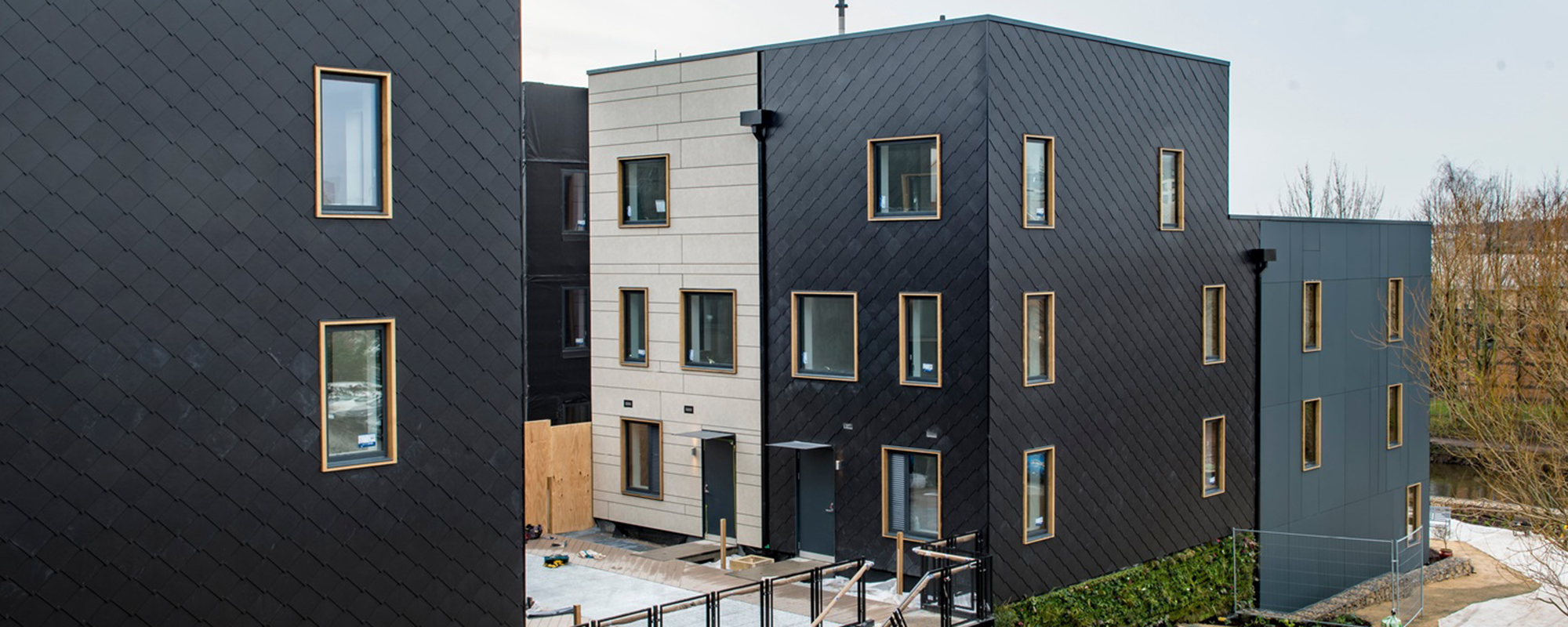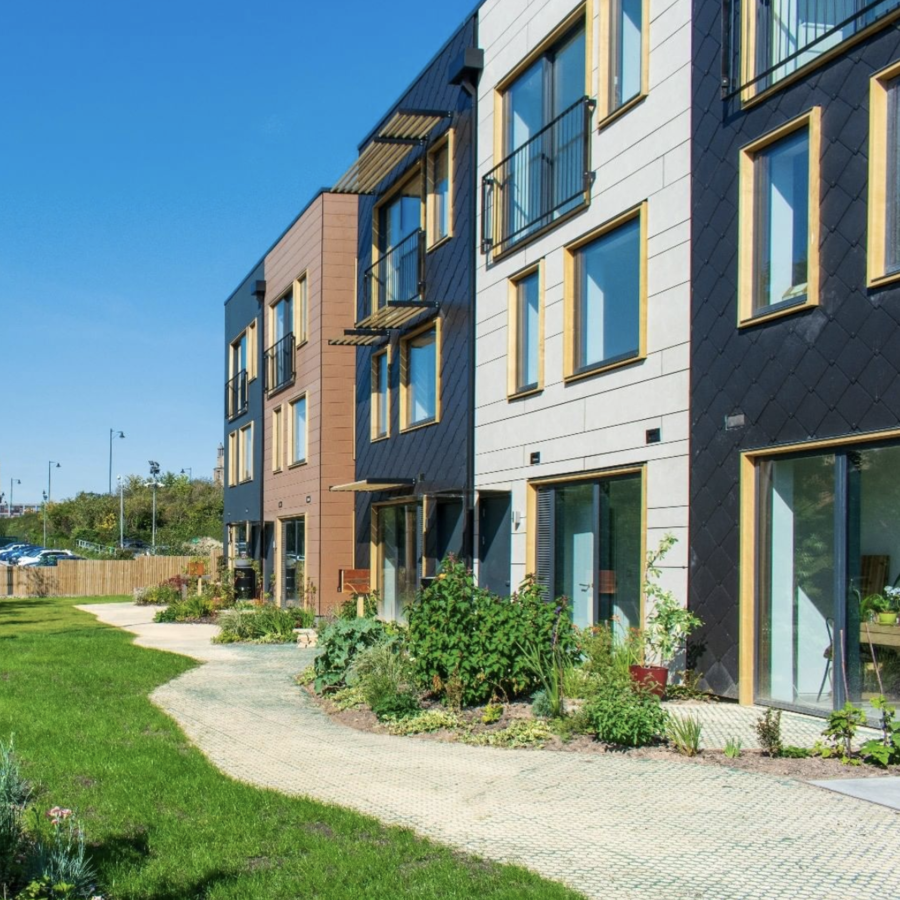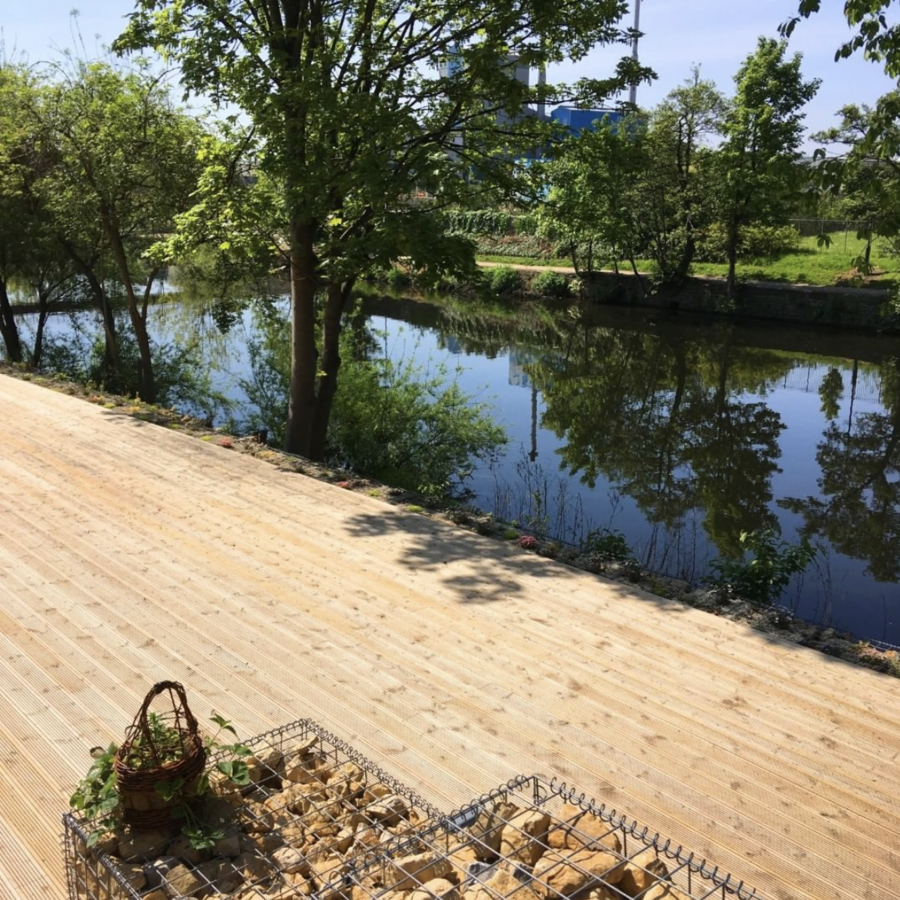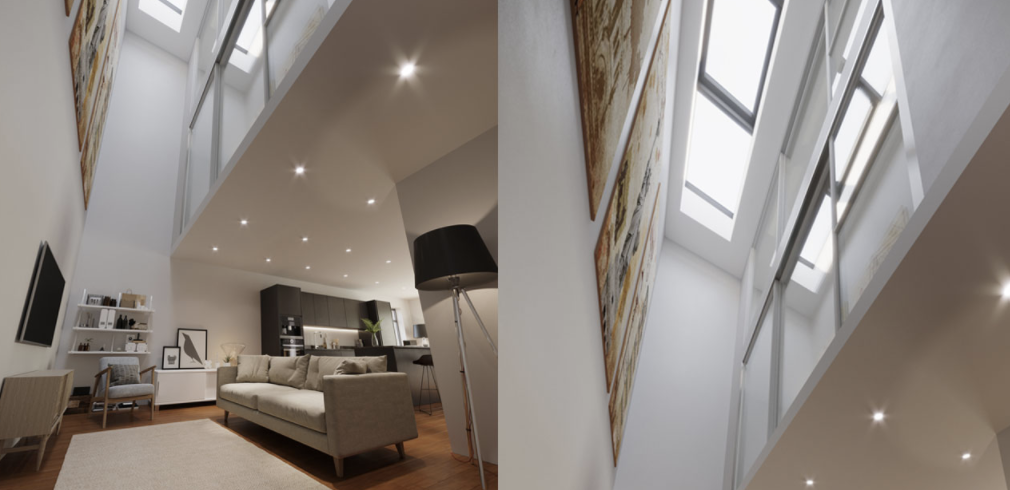Get updates from The Developer straight to your inbox Yes, please!
“Re-engineer from first principles: what and how you build”
Citu has gone from straight-up developer to bringing the whole design and manufacturing process in-house. In this interview, managing director Chris Thompson talks timber, trades and system change

“The biggest barriers are culture, skills and training,” says Chris Thompson, managing director of Citu.
We’re talking about blockers to innovation in construction. I’ve come to Leeds’ Climate Innovation District to record a podcast in the Citu Works, where house components are assembled before being erected on a 21-acre site just over the River Aire. The factory can produce up to 750 homes each year.
“We moved from being a developer that outsources everything to a contractor to vertically integrating the whole design and manufacturing process in-house,” says Thompson.
He founded the company 16 years ago, but it was only six years ago that Citu hit on the potential of using factory-built modular timber-frame homes to reduce embodied carbon – a switch that would see its workforce grow from 10 to more than 150.
“The construction industry is used to working in a certain way. Projects are put together with quite specific time and financial outcomes and it drives a certain type of behaviour that tends to be every man for himself.”
The resulting culture causes problems with quality control, breakdowns in teamwork, and a failure to modernise, Thompson says.
“The industry drives a certain type of behaviour that tends to be every man for himself”
Citu has always been what Thompson describes as a “purpose-led development business” with a mission to tackle the climate emergency. Its first project was a highly insulated polystyrene house.
The move to modular prefabricated timber as a primary material was Citu’s response to a series of overlapping questions. “Productivity in construction is woefully low,” says Thompson. “We’ve got quality issues and we have embodied carbon. It was the opportunity to address all of these by re-engineering from first principles: what and how you build.”
Developed with Leeds Beckett University and part-funded by an Innovate UK grant, the airtight timber frame reduces carbon-use by sourcing wood from Scottish forests, and minimises waste and transport by being manufactured locally to a site.
The homes are then finished by a “multi-skilled team” of electricians, plumbers and joiners who are all directly employed by Citu. “They go in and complete a house working as a team. It’s a very different culture because those different trades are put together as one team and measured by the quality of their output.”
Thompson comes from a construction background, having trained as a commercial manager with Balfour Beatty. He worked as a quantity surveyor and project manager for several developers before founding Citu.
But to change the way it worked, Citu looked to recruit outside the industry – its operations director is ex-BMW, and roughly 80% of the senior management team hails from manufacturing.
“Citu Works is capable of producing up to 750 homes each year”
“We were looking to facilitate continuous improvement at a micro level, taking a long-term approach,” says Thompson. “We are producing a number of homes per month that is increasing each month.”
Last year was dramatic. There was momentum for environmental construction as several local authorities declared a climate emergency.
Then the ban on combustibles hit timber construction hard: “The fire regulations post-Grenfell set us back to re-engineering and lots of testing, demonstrating and giving evidence.”
In the end, Citu re-engineered most of its buildings to be less than 18m tall. “I don’t think the ban was intended to catch timber out as a structural material, but it has. I know swift action was required post-Grenfell and understandably so. But I expect [moving forward] a more holistic approach will be taken.”
A government consultation on the combustible ban is open until 25 May, and the Architects Climate Action Network in particular has been urging the industry to respond and request that timber primary structure be made exempt.
The factory produces floor and wall cassettes just-in-time for the neighbouring site. The windows and insulation are put in place, and the walls tested for airtightness, before being erected within a day or two of assembly.
“That’s the ambition, but the inevitability of winter means there are days like today when the crane can’t operate because of 30 mile-per-hour winds.”
The cassettes are screwed together and stacked on top of a carpark – a steel and concrete foundation. For phase two of the district, Thompson says the company is trialling a cement alternative called Cemfree.
“I don’t think the ban was intended to catch timber out as a structural material, but it has”
“We have a team that puts on the waterproofing and the finishing materials on the outside, then we have a team that does the fit-out. The only bits of construction we don’t do ourselves are groundworks, roofing and cladding, decoration and kitchens.”
Why build homes only to Passive House equivalency and not the actual standard?
Thompson says, “If we optimised everything for Passive House, the orientation and building forms would be slightly different and that might not fit with the place.” For example, that could mean turning away from the river. “We’ve got the opportunity to make the most of that relationship and we’re trying to grab that.”
The homes are over the Corten-steel Citu Bridge. The masterplan, designed by White Arkitekter, includes 121 homes and 191 flats, which incorporate rainwater and stormwater collection, mechanical ventilation with heat recovery, cycle storage, solar panels, and green roofs. The houses form an appealing and quiet pedestrian street. You can imagine bumping into and greeting neighbours here, and although the landscaping is not playful, there is space to play.
Inside, the show home feels narrow, but comfortable and stylish. Unfortunately most of the riverside terraced houses are single-aspect, built back-to-back, which leaves no views from one or two of the four bedrooms. These rooms have windows that look onto a blank wall – an internal triple-height void with a rooflight. It’s too bad – it solves the problem of a site level change but compromises the home. These rooms are more suitable for storage, a den or home gym.
“We have to create a great place, but we also have to make the land economics work,” says Thompson. “We’ve got to get a density that makes the appraisal stack up.”
The site has a resident gardener, who has tiered the landscape to enhance biodiversity. The riverbank is more natural, while upper tiers are cultivated, and it is said one in five plants is edible. There’s a wooden riverside deck for barbecues or outdoor yoga.
It’s very quiet and doesn’t feel like a place that (according to the brochure) is a 15-minute walk to the city centre.
Later phases are said include a two-form entry primary school, care home, commercial offices and leisure facilities. The second phase is designed by Manchester-based Ollier Smurthwaite Architects.
“It’s a much simpler existence than having a big Victorian suburban house”
Thompson says that among the completed homes, there’s an interesting mix of residents (he lives there, too). “There’s families, there’s couples,” he says. “We have downsizers, where the kids have left home and they want to move back into the city and enjoy the amenities.
“It’s a much simpler existence to having a big Victorian suburban house that needs a lot of maintenance and work in the garden.”
The ambition is to attract families: “There hasn’t been family housing built in Leeds city centre for about 100 years,” Thompson says. “There’s a big focus on walkability, so it feels very safe and very grounded.”
But there’s also underground car parking, too. “We’ve got about 0.7 spaces per dwelling. Whilst we think that the number of cars will reduce, we can’t really say that completely for sure today,” Thompson says.
“We’ve got to meet some of the market needs.”
Listen to the podcast by clicking on the link below and sign up to The Developer Weekly to be updated when new episodes go online.
This year’s Festival of Place is happening on 7 July 2020 – go to www.festivalofplace.co.uk for updates on tickets and speakers.
Support The Developer on Patreon
Our journalism has always been free-to-air.
If you value what we publish, be our patron from £3 per month
Sign up to our newsletter
Get updates from The Developer straight to your inbox
Thanks to our organisation members
Become a member
© Festival of Place - Tweak Ltd., 124 City Road, London, EC1V 2NX. Tel: 020 3326 7238





